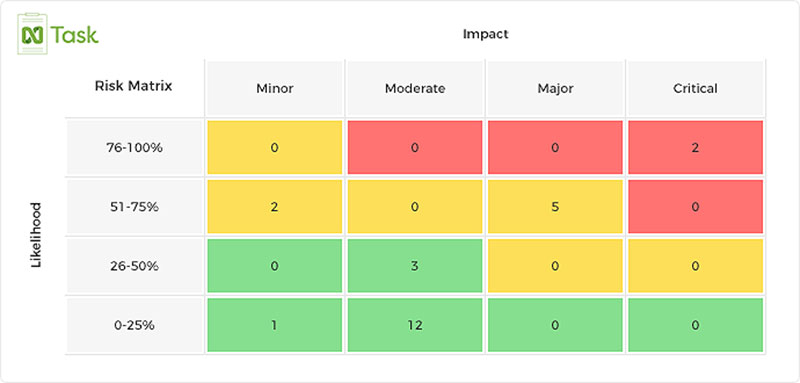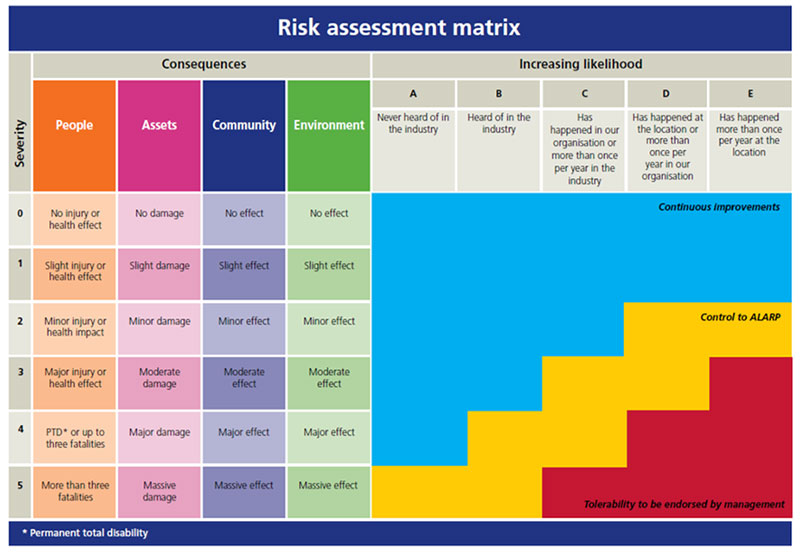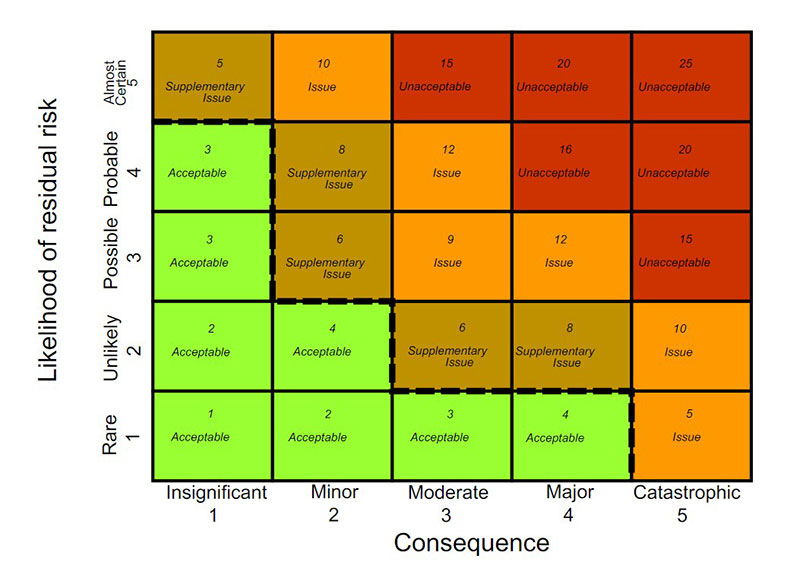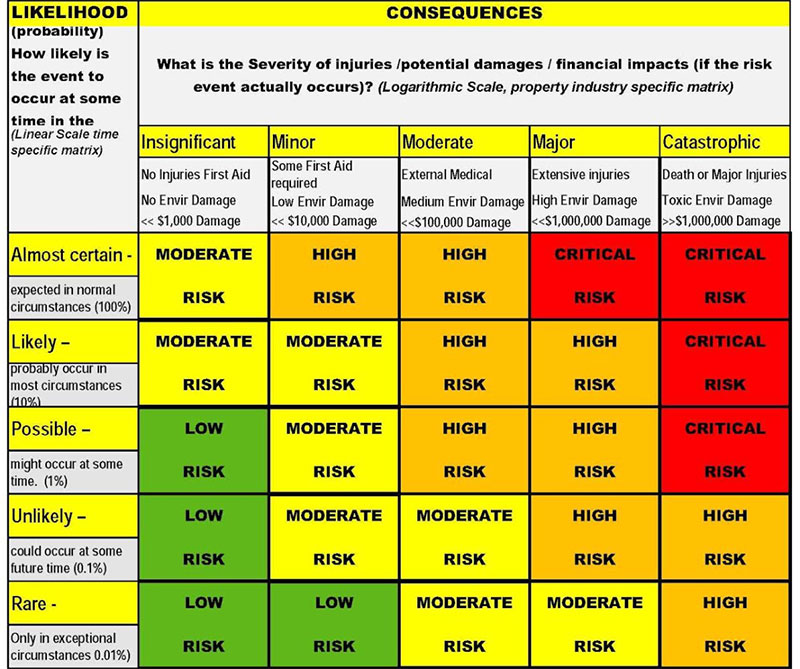Every decision carries its own set of risks—whether launching a new website or restructuring an online shop’s user interface, each move is a gamble. Behind the sleek designs and user-friendly navigation lies a risk assessment matrix, an unsung hero in the world of web design, working diligently to minimize the fallout of every potential mishap.
This indispensable tool is more than a mere precaution; it is a lens through which project risks are assessed, evaluated, and managed.
Through thoughtful application, a risk assessment matrix allows one to stay several steps ahead, ensuring that even the most unforeseen events have a devised strategy.
By the close of this article, you’ll have assimilated the wisdom to wield risk management frameworks and likelihood-consequence scales effectively, transforming uncertainty into structured foresight.
A journey through the intricacies of hazard evaluation and risk prioritization awaits, offering not just insights but actionable skills.
You’ll emerge more equipped to navigate the precarious tightrope of web design projects, with a fortified grasp of risk control measures and mitigation strategies.
What is a risk assessment matrix?

Image source: Fred Wilson
A risk matrix is sometimes also called the Probability Matrix, or Impact Matrix. This is an effective tool that can help in risk evaluation by focusing on the probability of potential risks.
A risk assessment matrix can help you calculate project risk quickly. It does this by identifying the things that could go wrong and weighting the potential damage. This makes it easy to prioritize problems. Action will be needed in order to keep a project on course, and safe as well.
Project managers should think about potential risks in order to avoid risk events from happening. While managing uncertainty sounds challenging, there are more and more calculating risk tools available today that can help and require little effort on your part. Simply create your own risk assessment matrix and use it as many times as you need.
Here are some benefits that you can take advantage of when making your risk matrix:
- You will be able to prioritize the risks with the level of severity.
- You get a simple process for the management of risk.
- It helps you in finding the potential risk with minimal effort.
- Information is recorded and audited.
- It demonstrates the organization’s ability to managing risk.
- It helps in neutralizing any possible consequences.
How to make a risk assessment matrix
If you want to do your own risk assessment matrix, you can start by defining the scope of work. Depending on what you are trying to improve, you need to identify different areas of risk. Choose your objective and make sure it is clear as possible.
Step 1: Identify Hazards

In order to start, you want to go for as many risks as you can. The idea behind this is to get different views. A brainstorming session could be of help. The list that you get is going to be the foundation of the risk assessment matrix.
Connected with your scope, the list needs to belong and detailed. It can include anything from theft, to burns, and even pollution. It is really important that you think at all potential risks for any new project you are working on.
You can also think about what happens when you identify them. But not to worry, we will discuss that soon enough.
Step 2: Risk Analysis

The risk analysis is not something to take lightly. There are certain steps that you need to follow in order to do effective management of risks. When an organization has pitched all the right risks, the next step is going to carefully evaluate them.
A risk assessment matrix focuses a lot of chances and consequences as the main focus. But depending on the organization, we are talking about you can encounter terms like “vulnerability” or “speed of onset”.
Step 3: Determining Risk Impact

Any risk assessment matrix means that you will need to check probabilities and consequences of risk events that might happen. The results of such assessments are used to make a top of risks in order to find the most important ones, as well as less critical ones.
In a risk chart, you can see exactly how both high-risk and low-risk factors are shown. The impact of a successful attack can be split into two types: “technical impact” and the “business impact”.
Step 4: Prioritize the risks
When you will see a risk assessment matrix, you will be able to compare different levels of risk. It can include any internal rules or policies.
One thing that should be noted is that the risk assessment process can be an ongoing evolution. A matrix needs to change at the same time with changes that appear in your company. If it is done one time per year, emerging risks could go unnoticed or even undetected.
Want to give your career a chance? Check out this course from Google.
Take the Google-designed project management course and prepare for a high-paying career in an in-demand field with over 715,000 open jobs, regardless of your experience or degree, and get the chance to apply for jobs with Google and other top U.S. employers.
How to use the risk assessment matrix?
When the risk assessment process is complete, you can start to take data into the matrix. Any risk assessment matrix uses two axes, one that measures the likelihood, and the other one measures the consequence result.
Likelihood: the probability of a risk

Depending on the likelihood of the occurrence of the risk, the risk can be classified under these categories:
– A risk that is almost guaranteed to show up during the execution of the project. Any risk that is more than 85% likely to cause problems is going to fall under this category.
– Risks that have a 60%-80% chance to occur can be grouped as likely.
– Risks that have a 50/50 probability of occurrence are named occasional.
– Seldom are the risks that have a low probability of occurrence.
– Unlikely are the risks that have almost no probability of occurring.
Consequences: the severity of the impact or the extent of damage caused by the risk

The consequences of risk can be ranked into five categories. These are based on how severe the damage can get.
- Risks that can cause a negligible amount of damage are called insignificant.
- Risks that have a small potential for negative effects are called minor.
- Risks that do not impose a great threat but are yet sizable damage can be classified as moderate.
- Risks that have substantial negative effects and are going to impact in a serious way the success of a project is called critical.
- Risks that come from human error or the environment. Other causes can be procedural deficiencies or major system loss. This will require the closing of the operation and is called catastrophic.
Knowing what elements a risk assessment matrix has is important. This is going to help you and your organization to manage risk effectively and reduce workplace incidents.
The risk assessment matrix is a document that has to be updated and maintained with curiosity. Risks are evolving and the matrix should do the same. Certain events are going to trigger the need for a refresh. One could be like establishing an enterprise risk management program.
Are you looking for a great project management app?
Here are our recommendations:
FAQs about the risk assessment matrix
How Do You Create a Risk Assessment Matrix?
Crafting a risk assessment matrix begins with identifying potential risks, followed by determining their likelihood and potential impact. To assist in these steps, a lot of online tools are available that provide templates and guidance, ensuring the process is thorough and efficient. These factors are then plotted on a grid, creating a visual map from which risk mitigation strategies can be developed, ensuring a proactive stance on potential vulnerabilities.
Why is a Risk Assessment Matrix Important in Project Management?
In the arena of project management, a risk assessment matrix is indispensable—it provides a clear, organized way to quantify potential project risks. This foresight enables project managers to allocate resources intelligently, ensuring that high-priority risks are addressed with commensurate urgency and precision.
Can a Risk Assessment Matrix Help in Reducing Risks?
Certainly. A risk assessment matrix isn’t just a passive diagnostic tool; it’s actively used to formulate risk treatment plans. By spotting high-probability and high-impact threats, corrective actions can be deployed promptly, effectively diminishing potential issues before they bloom into costly problems.
What is the Difference Between Qualitative and Quantitative Risk Assessment?
Qualitative risk analysis relies on subjective judgment to assess the severity and likelihood of risks, often resulting in a descriptive or categorical analysis like a risk assessment matrix. In contrast, quantitative risk analysis brings to the table numerical data and statistical methods to objectively measure risk.
How Often Should You Update a Risk Assessment Matrix?
It should be a living document, updated regularly. As project dynamics shift—resource availability, timelines, scope changes—the risk landscape morphs. It’s crucial to keep the risk assessment matrix reflective of the current state, ensuring that newly surfaced or changed risks are recalibrated on the matrix.
What Should Be Done After Completing a Risk Assessment Matrix?
Post-completion, it’s pivotal to draft action points. This means constructing risk mitigation strategies, delineating clear risk control measures, and establishing contingency plans. This actionable approach is what transforms an otherwise theoretical exercise into a robust shield against uncertainty.
Who Should Be Involved in Creating a Risk Assessment Matrix?
Stakeholders from various echelons should have their say—a cross-functional team often brings diverse perspectives to the table. Involving representatives from management, operations, and on-the-ground employees ensures a holistic and informed perspective, capturing a range of insights that a single dimension may miss.
Can a Risk Assessment Matrix Be Applied to Any Industry?
Without a doubt. Though the specific risks may differ from finance to construction, or IT to healthcare, the fundamental principle of the risk assessment matrix—risk prioritization and management—remains universally applicable. Each industry can tailor it to serve specific requirements, ensuring relevance and efficacy.
How Does a Risk Assessment Matrix Fit into an Overall Risk Management Process?
A risk assessment matrix isn’t a standalone tool; it’s a crucial cog in the risk management framework. It informs risk management processes by allowing decision-makers to visualize and thus manage identified risks better within the broader context of their overall business strategy and objectives.
Conclusion
Navigating through the intricacies of the risk assessment matrix has brought us to a key juncture where theory intersects with actionable insights. It’s more than charts and numbers—it’s a risk management framework sculpted to fortify projects against the unforeseen.
The article’s journey has equipped you with the knowledge to methodically prioritize risks and ideate mitigation strategies that don’t just serve as a bulwark against potential pitfalls but also as a beacon guiding your decision-making process.
In pulling back the curtain on this pivotal tool, you’ve seen its capacity to transcend industries, adapting to the nuances of each with a chameleon-like versatility. True, it requires regular updates—a vigilant eye on the ever-shifting landscape. Still, with the risk assessment matrix in hand, you step forward with confidence, assured in the knowledge that risk is not just accounted for but methodically managed. It’s the ultimate designer’s ally, turning unpredictability into a well-navigated path.
If you enjoyed reading this article on risk assessment matrix, you should check out this one about Steve Jobs’s leadership style.
We also wrote about a few related subjects like business process modeling, business model innovation, business model vs business plan, accelerator vs incubator, startup funding stages, how to value a startup, IPO process, and IPO lockup period.
- What Is a War Room and How to Use it in Project Management - April 23, 2024
- Business model innovation: What it is and why it matters - April 20, 2024
- What Is A Risk Assessment Matrix And How To Use It - April 8, 2024












